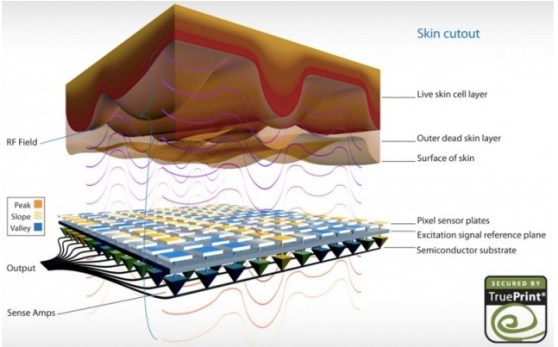 Apple’s new phone could include a convex home button that will act as a fingerprint sensor, according to an analyst report, and could open up all kinds of fun possibilities.
Apple’s new phone could include a convex home button that will act as a fingerprint sensor, according to an analyst report, and could open up all kinds of fun possibilities.
The report emerged just hours after news that suggests Apple will release the new phone on Sept. 10.
The new phone, dubbed the iPhone 5S by some and the iPhone 6 by others, will carry Apple’s updated iOS 7 software, which was announced in June. But so far we’ve only been able to speculate about the hardware. This latest news should also be categorized as a rumor for now.
KGI analyst Ming-Chi Kuo, who has been called well-informed, said Apple is likely to make room for the much-rumored fingerprint sensor by making the home button curve outward (convex) slightly instead of the inward (concave). The button has been concave since its debut in 2007. Kuo’s report was cited by both MacRumors and AppleInsider.
That outward curve would prevent Apple from losing valuable internal space, as it packs ever more features into the phone.
The technology is believed to come from AuthenTec, the biometric security firm Apple purchased last year. It uses capacitive and RF technologies in its chips, a method that images fingerprints more effectively than optics-based systems because it avoids the build-up of dust or other particles. It will also make it dead-easy for consumers to know where to put their fingers for scanning.
To protect the protruding sensor from scratches, Apple is expected to use sapphire glass, a hard material. Apple filed for a fingerprint sensor patent in June.
Here’s the quote from Kuo’s report:
Convex home button creates space for fingerprint sensor; yield to improve. We think that a fingerprint sensor will be placed under the home button of iPhone 5S. However, assembling it could be difficult as the space under home button is limited as it already has to accommodate the Lightning connector, speaker and microphone. Thus, we think the shape of the home button could be changed from concave to convex to create more space for a fingerprint sensor.
Sapphire prevents home button from being scratched. A convex home button could be more easily scratched, so a harder material is required. We believe Apple will switch from plastic to sapphire, whose hardness is second only to diamond. Sapphire would protect the home button from being scratched and the fingerprint sensor from being damaged.
The report set off speculation about what else you could do with the sensor (see Stabley Times) aside from unlocking the home screen more easily (instead of doing it the old way, by swiping across the screen and entering a password).
Some of it is pretty interesting:
- Preemptive login — The sensor could automatically log you in to any apps for which you’d otherwise use a password. Your fingerprint acts as the confirmation that it is really you, making a password irrelevant.
- Digital wallet — By adequately securing your phone, the sensor could let you access your credit and debit card information through an app Apple houses on the phone. Indeed, in June, Apple applied for a patent on a combined virtual currency and digital wallet technology that would allow you to store money in the cloud, make payments, and perhaps even communicate with point of sale terminals that have NFC technology.
- Presence — You can preprogram the phone to list you as available for things like chat in your Facebook app once you hit the sensor.
- Muliple users — The ability to recognize multiple fingerprints could allow you to hand your phone off to other people, including your kids. You could program different experiences for each of them, for example letting your kids play games with restriction settings. Although some people are skeptical that iPhones will be shared; more to happen with tablets?
- API — Apple could open the sensor to developers through an API, allowing them to create their own app experiences by implementing the sensor technology in ways they see fit.
(UPDATE: There are the other “fun” possibilities open to an organization like the NSA, which has come under fire for pressuring technology companies to help it gather intelligence on individuals about their communication habits. As one Facebook reader asks, could your fingerprints be tracked through this technology and associated with your national security records?)
It should be noted that fingerprint sensors haven’t been widely used before in smartphones because they haven’t worked reliably. Motorola released one in its Atrix 4G phone in 2011, but many people reported the sensor failed to recognize their fingerprint. Indeed, reports earlier this year said that a supply chain source in Taiwan said Apple had failed to find a coating material that did not interfere with the fingerprint sensor, and had delayed production.
In contrast, the Samsung Galaxy S3 uses a Face Unlock feature, which is also available in Google’s Nexus 4. Other phones have worked to unlock the phone with voice recognition.
[Image source: MacRumors]

